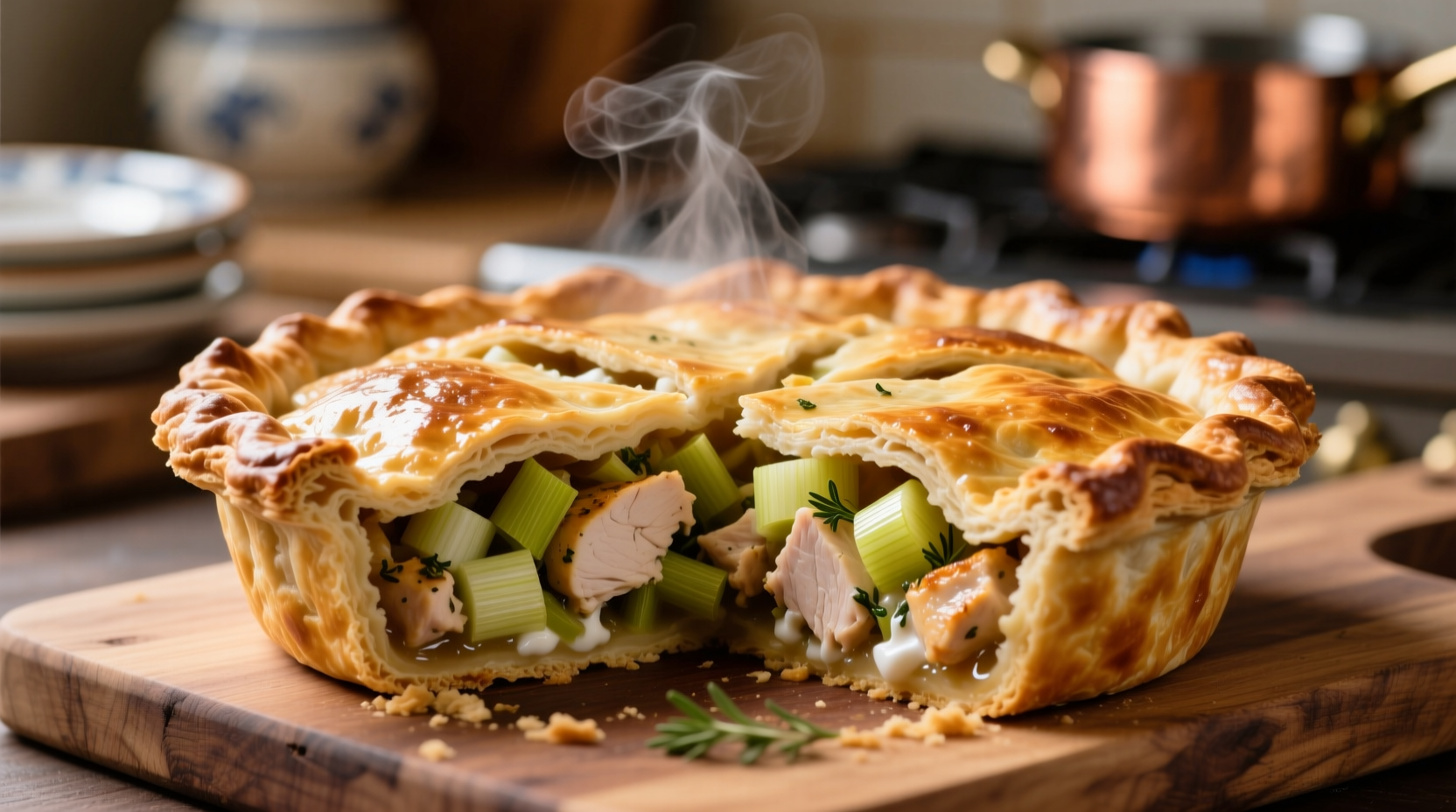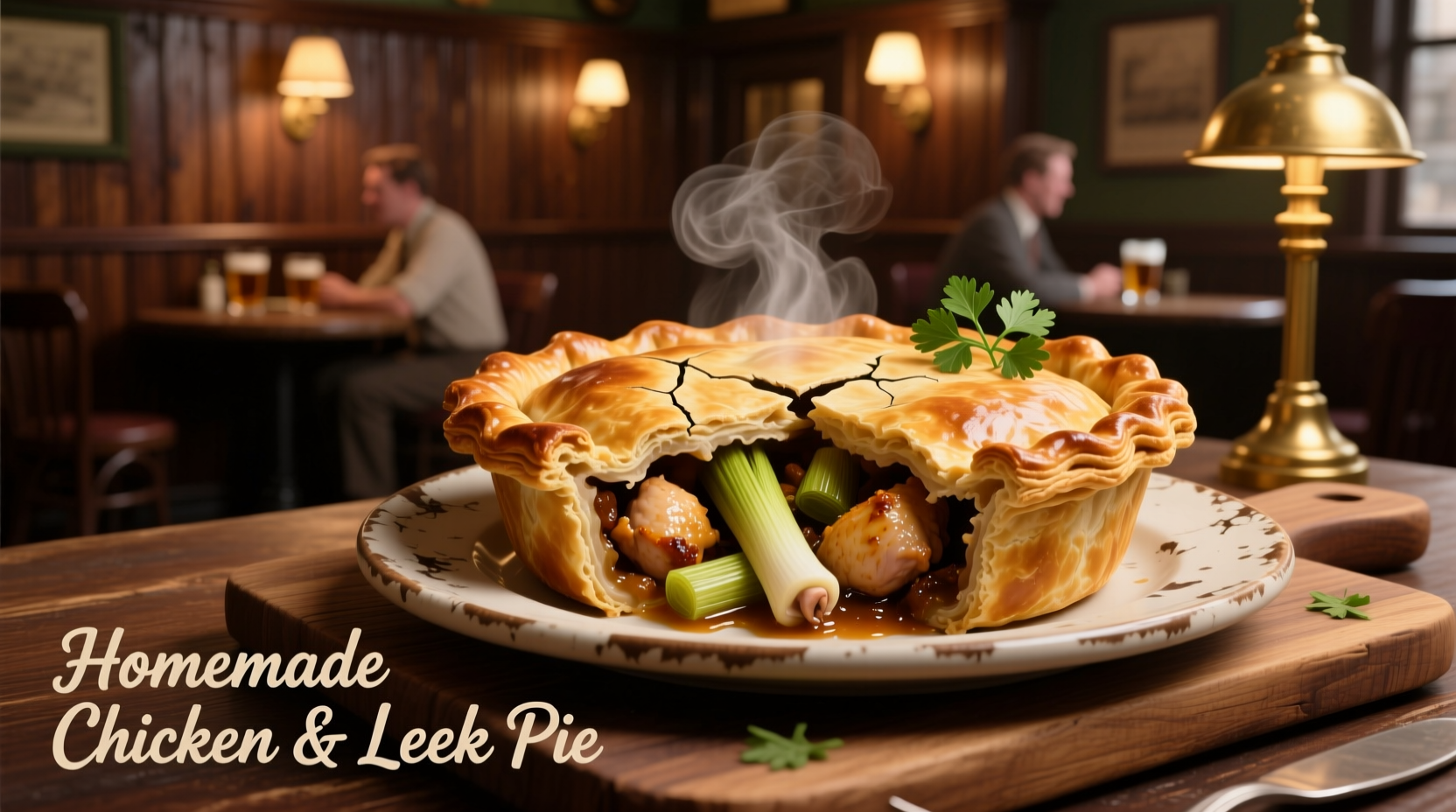Chicken pie with leeks represents one of Britain's most beloved comfort foods, combining the delicate sweetness of leeks with succulent chicken in a rich, creamy sauce. Unlike standard chicken pot pies, the addition of leeks provides a subtle onion-like flavor without overwhelming sharpness, creating a sophisticated depth that elevates this traditional dish. According to the Culinary Institute of America, properly prepared leeks contribute essential aromatic compounds that enhance poultry dishes without dominating the flavor profile.
Why Leeks Transform Chicken Pie
Leeks serve as the secret ingredient that distinguishes exceptional chicken pies from ordinary versions. Their mild, sweet flavor develops complex umami notes when cooked slowly, creating a foundation that supports rather than competes with the chicken. Food science research from University of Minnesota Extension confirms that leeks contain unique sulfur compounds that mellow during cooking, producing a richer flavor base than onions while maintaining structural integrity in pie fillings.
Essential Ingredient Selection Guide
| Ingredient | Professional Selection Tip | Avoid These Mistakes |
|---|---|---|
| Chicken | Use bone-in, skin-on thighs for maximum flavor and moisture retention | Over-reliance on breast meat (dries out during baking) |
| Leeks | Select medium-sized with crisp white roots and vibrant green tops | Using wilted or yellowing leeks (bitter flavor) |
| Pastry | Make your own using European-style butter (82% fat content) | Using pre-made pastry with hydrogenated oils |
Step-by-Step Preparation Process
Preparing the Leeks Properly
Cleaning leeks thoroughly remains the most critical yet overlooked step. Cut off the dark green tops and root end, then slice lengthwise before submerging in cold water to remove trapped soil. The BBC Good Food test kitchen confirms that improperly cleaned leeks introduce gritty texture that ruins the entire pie. Sauté sliced leeks gently in butter over medium-low heat for 15-20 minutes until translucent but not browned - this develops sweetness while maintaining structure.
Building Flavorful Filling
Start by poaching chicken thighs in homemade stock with aromatics. Once cooked, shred the meat while reserving the stock. Create a roux with butter and flour, then gradually incorporate the reserved stock and sautéed leeks. The ideal filling consistency should coat the back of a spoon but still flow slowly - too thick and the pie becomes pasty, too thin and you'll get a soggy bottom crust. Professional chefs maintain the filling at 165°F (74°C) minimum before assembly to ensure food safety, per USDA Food Safety guidelines.

Pastry Perfection Techniques
For flaky, tender crust, keep all ingredients cold and handle the dough minimally. A professional trick: add one tablespoon of vinegar to your ice water mixture to inhibit gluten development. Roll the bottom crust slightly thicker than the top to prevent bottom sogginess. Before baking, brush the top crust with egg wash and create steam vents in a decorative pattern - this prevents filling overflow while creating an attractive finish.
Common Mistakes and Solutions
Home cooks frequently encounter three critical issues with chicken pie:
- Soggy bottom crust: Pre-bake the bottom crust for 10 minutes at 375°F (190°C) with pie weights, or brush with beaten egg white before adding filling
- Watery filling: Ensure your roux reaches proper thickness (it should hold its shape briefly when drizzled) and let the filling cool slightly before assembly
- Dry chicken: Use dark meat exclusively or combine with 25% chicken breast, and never overcook during the initial poaching stage
Historical Context and Modern Variations
Chicken pie with leeks evolved from medieval "coffyns" - early pies with inedible rye crusts designed for preservation. The addition of leeks became prominent during the Victorian era when kitchen gardens commonly included this hardy vegetable. According to culinary historian Clarissa Dickson Wright's research, leeks provided essential nutrients during winter months when fresh vegetables were scarce, making them a practical addition to meat pies.
| Era | Key Development | Modern Application |
|---|---|---|
| Medieval (14th century) | Inedible rye crusts for preservation | Understanding pie's original purpose as food storage |
| Elizabethan (16th century) | Edible crusts with decorative elements | Modern decorative pastry techniques |
| Victorian (19th century) | Leeks incorporated for winter nutrition | Seasonal ingredient awareness |
| Contemporary | Focus on quality ingredients and technique | Artisanal approach to classic comfort food |
Serving and Storage Recommendations
Allow your chicken pie to rest for 15-20 minutes after baking before serving - this critical step lets the filling set properly. Pair with simple roasted vegetables or a crisp green salad to balance the richness. For leftovers, store in an airtight container in the refrigerator for up to three days. Reheat individual portions in a 325°F (163°C) oven for 20-25 minutes rather than using a microwave, which makes the crust soggy. Freezing works well for fully baked pies - wrap tightly and freeze for up to three months.
Expert Tips for Consistent Success
Professional chefs emphasize these often-overlooked details:
- Use homemade stock instead of store-bought for significantly better flavor depth
- Add a splash of dry sherry or white wine to the filling for complexity
- Include a small amount of Dijon mustard for subtle tang that enhances other flavors
- Place the pie on a preheated baking sheet to ensure bottom crust cooks properly
- Monitor internal temperature - filling should reach 165°F (74°C) for food safety











 浙公网安备
33010002000092号
浙公网安备
33010002000092号 浙B2-20120091-4
浙B2-20120091-4